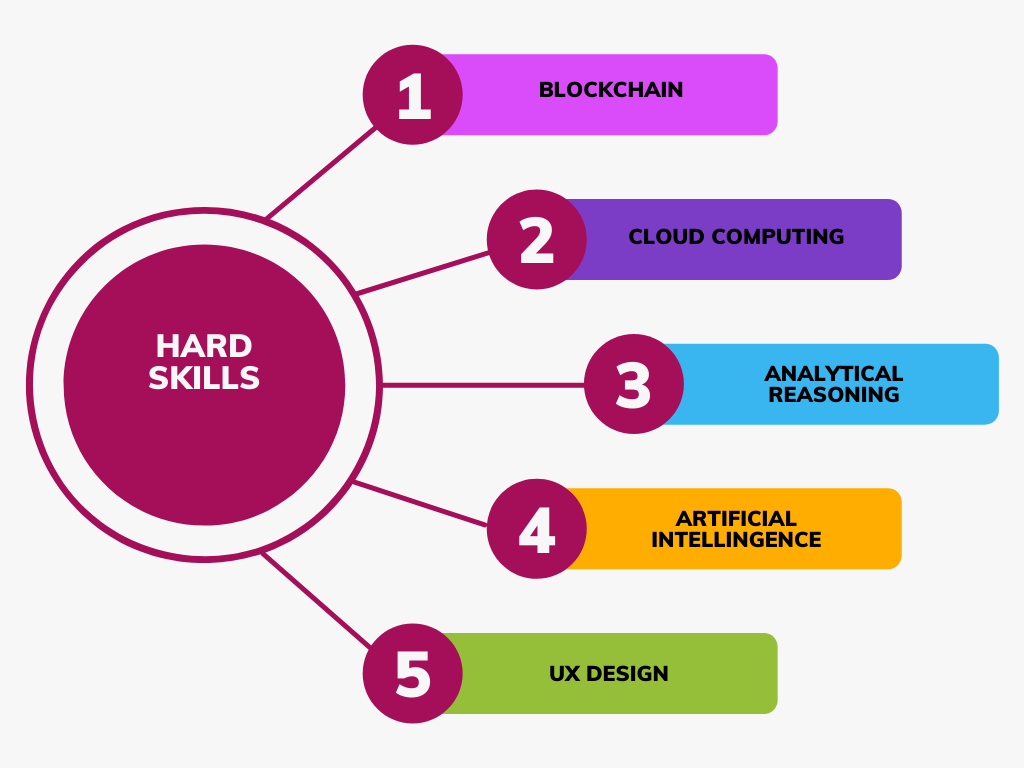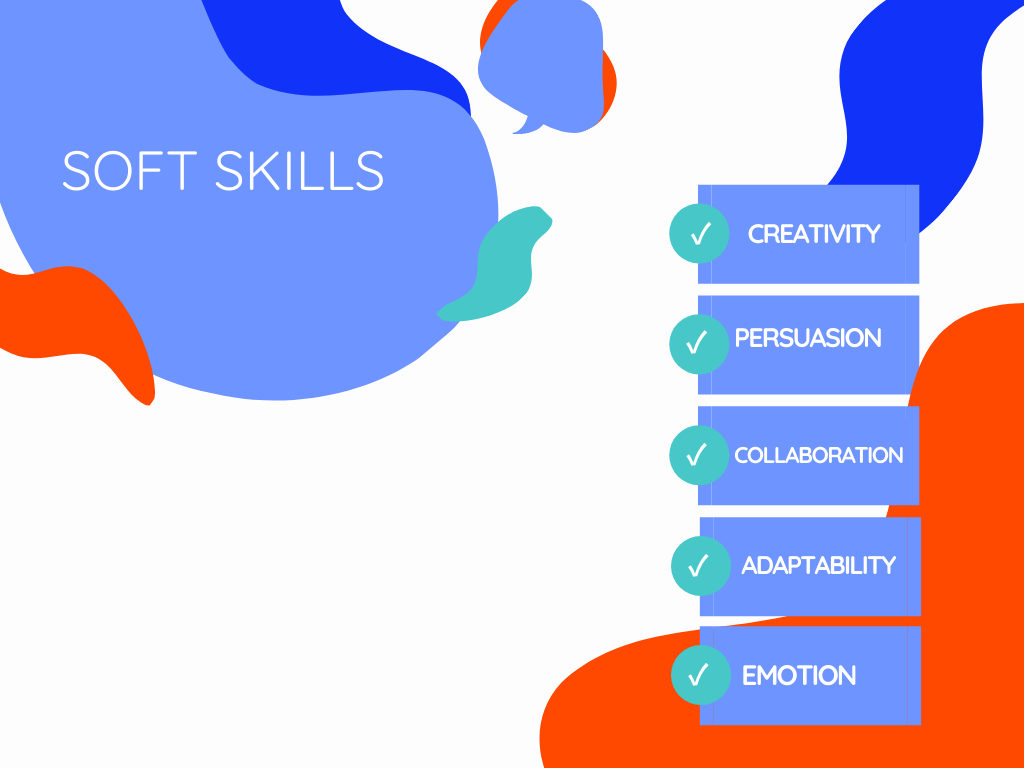What Is a Skill Gap (& How Do You Fix It) In 2024?
You want your employees to perform at their best but acknowledge that not every employee has all of the necessary skills — a skill gap if you will.
A skill gap is the difference between the skills you need your employees to have and the skills they currently have.
It’s like having a ham sandwich that lacks cheese (because cheese — and skills —
So let’s find out exactly what a skill gap is — and how to fix it.
What Is a Skills Gap?
A skills gap is when your employees need a specific skill to achieve a specific level of performance, but they lack some of the necessary abilities and knowledge to reach that performance level.

Or their current skills and knowledge are too outdated to be efficient.
Technology is typically to blame, drastically changing careers in various fields like computer science, manufacturing, artificial intelligence, and many others.
So what impact does a skill gap have in the workplace?
For Employees
A skills gap results in workplace frustration for employees because of an inability to meet performance requirements.
When employees know they lack a required skill, HR leaders should arrange for training before considering replacing the employee with a new hire.
Employers
A skills gap can be costly for employers in terms of productivity loss, high turnover, loss of morale and team innovation, profits, etc.
It is crucial to analyze it quickly and determine essential skills and what it would take to fill the gap with training programs (internal or external).
Reasons for Skill Gaps
Technology
Technological development creates skill gaps at a pace that is challenging to fill.
Artificial intelligence and automation are making many jobs obsolete while also creating new ones to support developing technology.
For example, in the brewing industry, software like Ollie helps streamline operations without completely replacing human expertise.
While this makes traditional roles obsolete, it creates a demand for tech-savvy employees who can manage these systems.

Additionally, the gig economy also changes what hiring managers look for and how workers supply those specifically needed skills.
Education
Inferior education contributes to skill gaps.
To help address critical skill gaps in areas such as literacy, numeracy, education needs to change on every level.
In most developed countries, too many unemployed graduates lack competence in these areas.
Foundational education must integrate more technology wherever possible, as digital skills are increasingly in demand across all industries.
Training
A lack of on-the-job training is another cause for skill gaps as companies no longer hire and train based on potential.
They want to buy the cheese-ready sandwich, not spend time crafting their own.
The pressure on immediate performance makes hiring managers look for “expert” candidates (who are harder to find and more expensive).
It’s a missed opportunity to invest in long-term staff and long-term results.
In-Demand Skills
Hard Skills

Hard skills are required to do a specific job. Easy to measure, define, and look for on an employee’s resume, they include:
- Blockchain: Employers want workers with particular expertise to assist with various cryptocurrencies like Bitcoin.
- Cloud computing: We all use it now, so employees with the ability to understand and work with multi-use systems like Microsoft Azure are the Swiss cheese.
- Analytical reasoning: A skilled worker who can analyze, interpret, and think strategically is invaluable to employers who have heavily data-driven businesses.
- Artificial intelligence: In a field with insane potential, professionals who work in the development of AI are not going anywhere but up!
- UX Design: Those who make it easy and enjoyable to use digital devices will never be out of work. They make our modern lives possible (and keep digital dopamine coming in steadily!).
Soft Skills

Soft skills are what make people enjoyable to work with. It’s like bacon — you either make it right, or you burn it. Soft skills, like good bacon, make work life work and include skills like:
- Creativity in problem-solving, conflict management, and innovation helps businesses compete.
- Persuasion is an essential skill in negotiations with clients as well as in leadership.
- Collaboration creates better results and is the skill that makes an organization work. It’s the butter on both ends of the skill sandwich, if you will.
- Adaptability enables a company to stay on its feet and survive tough challenges.
- Emotional intelligence is part of communication skills, a soft skill that empowers work relationships. (Did we mention this is the actual bread?)
How to Recognize Skill Gaps

1. KPIs
Key Performance Indicators (KPIs) are your most specific benchmarks, showing you exactly how much and how well a current employee contributes versus your compensation.
Anything below the benchmarks you’ve set is a competency gap to address. Sort out any isolated issues and look at overall performance trends to identify bigger training needs.
2. Employee assessments
Employee assessments are helpful to see what your employees’ skills gaps are because you can use different types of assessments — think open-ended questions, surveys, quizzes, tests, role-playing, describing scenarios for them to solve, etc.
You can add self-assessments to the mix and compare the results with input from the managers and supervisors to see how closely aligned their answers are regarding skill levels, skill gaps, and competence.
3. 360-degree reviews
This particular method (which includes surveys, focus-group discussions, and interviews) is about getting feedback on an employee’s performance from other colleagues, managers, and direct reports.
Occasionally, feedback from customers, clients, and vendors can also be included.
While you’re at it, if you focus on getting feedback on a specific performance issue, you’ll be able to use the data in individual as well as a team training program.
Most importantly, don’t forget to ask your employees directly what skills they struggle with and where they would like to improve. It’s an opportunity for a meaningful conversation.
4. Observations

Skills gap analysis begins with observation — opportunities to watch closely what is happening in every area of your business.
Look at how different factors affect skill gaps and performance. Numbers will never give you the full picture.
Observation will help you read between the lines of your KPIs and survey methods to find the missing links. You may discover different causes to problems than you anticipated or information that could change what you do with your gap analysis.
5. Performance benchmarks
Observe your top-performing employees. This will give you an overview of essential skills that bring success.
Use them in your skill gap analysis for soft and hard skills to see what interventions and training are needed.
For a powerful long-term strategy, incorporate the essential skills and suitable training into your hiring process and your employees’ journey.
Then performance assessment becomes easier, and you have a solid process for identifying, hiring and training workers according to your required competencies.
Skills Gap Analysis
A skills gap analysis is about figuring out what the difference is between the current skill level and the skills required to achieve the desired outcome.
Benefits of a Skills Gap Analysis

1. Insight into your workforce
A skills gap analysis gives you a more detailed overview of what your workforce is capable of in real-time, versus the ideal picture you have in mind.
It’s a map that indicates what to focus on in training your employees to ensure they are sufficiently skilled workers.
You can review the hard skills as well as what’s missing in the inter-relational soft skills.
A hard skill gets the work done, but soft skills make the process more satisfying.
2. Facilitates individual L&D
A skills gap analysis also benefits employees because as individuals, they get a chance to share and see for themselves what they are good at and where they can improve.
Sometimes, filling the skills gap can begin with a simple conversation on what the individual would most like to work on.
Individual motivation goes a long way in mastering new skills.
Doing a skills gap analysis creates room for initiative and growth, and everyone gets to participate.
3. Helps with strategic workplace planning
Do you want to make workplace planning easier and more effective?
A skills gap analysis gets you ahead of the game — incorporate your employee training into your strategy from start to finish.
You can create a precise workplace strategy that is clear on hiring, training, processes, development, opportunities, and the KPIs along the way.
It makes progress easy to measure and celebrate!
4. Streamlines recruitment
You simply cannot hire workers with the right critical skills if you don’t know what you need.

A skills gap analysis gives you a shopping list to compare with your current hiring resources.
You can prioritize hiring the skills you most need and train for the other skill gaps.
Your human resources department and hiring manager will be most grateful for a more streamlined recruitment process.
5. Gives you a competitive advantage
Combined with the benefits above, a skills gap analysis gives you an excellent competitive advantage if you implement it.
There is nothing like clarity on all the specifics of your workforce from the bottom up and inside out.
A streamlined recruitment, hiring, training, development, and growth plan with clarity on the skills your organization needs most is powerful fuel for success.
How to conduct a skills gap analysis
Of course, there’s no point giving you a mouthful about a skills gap analysis without giving you the how-to, so here goes:
1. Define your company’s mission
What exactly does your company want to accomplish?
What are your business goals and what skills are required to achieve them?
List them in as much specific detail as possible and include both soft and hard skills.
Combine the how with the communication and leadership skills in your description.
This gives you an idea of both the skills and the type of people you need.
2. Button-down essential skills
Zoom in on the most crucial skills of those you listed above.
Expand on them to set clear job descriptions and company values.
Explore what growth and change would mean for the required skills and how that growth can be supported and facilitated with training, regulatory changes, etc.
Knowing exactly what you need each role player to be able to do at the beginning as well as later on is valuable for planning.
3. Analyze current skills
Take a look at the current skill situation in your company. Use surveys, assessments, interviews, and records to give you an idea of where the skill gaps are.
Organize them in order of urgency.
Remember to also look at skills that are not being utilized or that are underutilized and see if you need to shift them around to other positions, update them, or remove them from outdated job descriptions and tasks.
4. Fill your skill gaps
Lastly, you need to fill the skill gaps. You have three main options here:
- Training — choose from bite-size online training, courses, workshops, mentor- or apprenticeship-style training options and decide whether it’s worth training either existing employees or new employees (or both).
- Hiring — hire new employees to fill skill gaps. Modify your hiring process and possibly the job description where necessary.
- Recruiting — use a more structured hiring process that involves formalized, structured interviews that focus on the specific skills you are looking for.
Mind the gap

Now that you know how to find and address skill gaps in your organization, you can “mind the gap.”
You can pinpoint what is needed to fill it and avoid having your company trip over the competency gaps on the road to success.
It’s worth the effort, time, and money to strengthen your strategy for the long run.
Make your success all the more inevitable and profitable!
Heideli Loubser is a wellness and education copywriter and a content marketing strategist helping you grow your business. She is also a solo homeschool blogging mom of two kiddos. When she’s not wielding her powerful pen to help businesses and other parents, she enjoys gardening, painting, caffeine, and dark chocolate in large amounts.